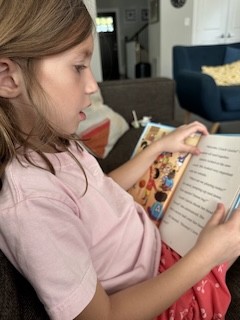Literacy Blogs
- All
- 3-cueing
- academic learning time
- academic vocabulary
- accommodations
- accountability testing
- Active View of Reading
- adolescent literacy
- afterschool programs
- alphabet
- amount of instruction
- amount of reading
- argument
- assessment
- auding
- author awareness
- automaticity
- balanced literacy
- beginning reading
- Book Buddies
- Book Flood
- challenging text
- classroom organization
- close reading
- coaching
- cohesion
- Common Core State Standards
- complex text
- comprehension strategies
- content area reading
- context analysis
- curriculum materials
- Daily 5
- decoding
- departmentalization
- DIBELS
- dictionary skills
- digital texts
- disciplinary literacy
- dyslexia
- early interventions
- effective teachers
- Emily Hanford
- executive function
- family literacy
- fingerpoint reading
- foundational skills
- graphic novels
- guided reading
- heterogeneous grouping of students
- homework
- improving reading achievement
- independent reading
- independent reading level
- informal reading inventories
- informational texts
- instructional level
- invented spelling
- jigsaw instruction
- knowledge
- leadership
- learning disabilities
- Lexiles
- linguistic comprehension
- listening comprehension
- literacy charities
- literacy policy
- literary interpretation
- main idea
- morphology
- motivation
- narrative text
- National Early Literacy Panel
- nonsense words
- oral language
- oral reading fluency
- paraphrasing
- Pause, Prompt, Praise (3P)
- personalized learning
- phonemes
- phonemic awareness
- phonics
- press and media
- principals
- prosody
- Readers' Workshop
- reading comprehension
- reading disabilities
- reading intervention
- reading levels
- reading models
- Reading Recovery
- reading research
- reading skills
- reading strategies
- reading to children
- reading wars
- reading-writing relations
- remedial reading
- rereading
- Response to Intervention
- Scarborough's Rope
- science of reading
- seatwork
- semantics
- sentence comprehension
- sequence of instruction
- set for consistency
- set for variability
- shared reading
- shared reading
- sight vocabulary
- simple view of reading
- Simple View of Reading
- small group instruction
- social studies
- sound walls
- Special Education
- speech-to-print phonics
- spelling
- stamina
- summarizing
- Sustained Silent Reading
- syllabication
- syntax
- syntax
- testing
- text complexity
- text interpretation
- text reading fluency
- text structure
- theme
- think-pair-share
- trauma
- visualization
- vocabulary
- word walls
- writing
- zone of proximal development (ZPD)
What Teachers Need to Know about Sentence Comprehension Revisited
Blast from the Past: This blog first posted on August 13, 2022. There was no incident that led me to repost this on December 13, 2025, just my own sense that it would be a good idea to revisit this much neglected aspect of teaching students to understand text. Originally, there was no podcast of this and now there is, and this updated version includes both a link to that podcast as well as to the original blog that elicited 23 thoughtful comments. What Teachers Need to Know about Sentence Comprehension Awhile back, I posted an opinion piece calling for the explicit ...
Literacy Charities for 2026
The whole point of Shanahan on Literacy is to encourage and support higher reading achievement. Towards that end, each year I recommend the highest rated literacy charities. I recognize that, like me, you have deep commitments to children’s reading success. That’s why it makes sense to include in our charitable giving organizations that distribute books to kids or that support their reading education in other ways, too. Annually, I consult Charity Navigator (U.S.) and Charity Intelligence (Canada) to identify the top-rated literacy charities (4-stars in U.S., and 5-stars in Canada). What that means is that you can be sure that every one ...
Won’t Challenging Texts Discourage Young Readers?
Teacher Question: I know you say students learn more when taught with grade level texts than texts at their reading levels. That may be true but won’t frustrating kids like that make them hate reading? Shanahan responds: I don’t want to undermine anybody’s motivation or love of reading. Though reading experts have long labeled some texts as “frustration level,” I hope you won’t take that moniker too literally. To be fair, your concern does seem justified according to some studies. For instance, middle school students say that when texts are difficult, their interest declines (Wade, 2001). Correlations among reading comprehension and affective variables like ...
Whole Books or Excerpts? Which Does the Most to Promote Reading Ability
Over the past few weeks, I’ve had several inquiries about the importance of whole book reading within reading instruction. And no wonder. Social media has been aflame with righteous claims about this purported and purportedly damaging shift to having students read excerpts within reading lessons rather than taking on whole books. I say “purported” because the claim seems to be that in the past teachers were teaching their kids to read books, and now they aren’t. I’ve been around quite a while, and I don’t remember the past that way. I say “purportedly damaging” because the idea that teaching reading with excerpts ...
Don’t Confuse Reading Comprehension and Learning to Read (and to Reread)
Blast from the Past: This piece was first published on May 7, 2022, and was republished on October 25, 2025. The original posting explained the distinction between a comprehension effect and a learning effect. Recently, I published a book on “leveled reading” that addresses this difference more thoroughly (Shanahan, 2025). The failure to make a discernment between these two outcomes has led to many pedagogical failures. Given that, I thought this to be a good time to sharpen the points made here, providing greater clarity and some background information about the source of this unfortunate misunderstanding, along with some specific ...
Considering Running Records, and No, I Don’t Beat My Wife Anymore
Teacher question: I’m confused. I've understood your message that we should stop obsessing about deriving an independent or instructional reading level. But I’ve also read that you feel that there is a place for F&P style running records (many schools still use them!). If a running record is producing a reading level, isn't this going against the idea that we should do away with the instructional level? Aren't there other problems with these tests, too (design problems, large standard errors, etc.)? Shanahan responds: You have it right, sort of. I thought my position on this was adroit and artful and you seem to find ...
What Role Should Pictures Play in Teaching Reading?
Teacher question: In the current era of readily available teacher-created materials through open marketplaces, and given the critical importance of print materials for beginning readers—particularly for multilingual learners and students with disabilities—what does current research indicate are the best practices regarding the optimal amounts of extraneous visuals to truly support their literacy development effectively? Shanahan responds: I hope most teachers are not spending a lot of time “creating” instructional materials. Some do, of course, but they tend to be a tiny minority. I’d rather their time be spent on figuring out students’ learning needs. Of course, there are those cut-and-paste artists who create “new” ...
Disciplinary Literacy Goes to Elementary School
Blast from the Past: This blog first appeared on August 14, 2021, and was reissued with minor revisions on September 20, 2025. Reading education – like the lengths of skirts and the widths of neckties – tends to be trendy. That’s unfortunate for those kids who happen to be in school when phonics isn’t cool and learning styles are. I often reissue these entries when I sense renewed interest in a topic. This time it is just the opposite. I’m not hearing much interest in this lately, and I think this neglect is a serious problem for kids. Maybe this ...
Our Middle School Reading Scores are Dropping – Help!
Teacher question: Middle school reading scores are either stagnating or dropping in my state, and they are looking at things they can do to help students improve. I’ve read the materials on the need for kids to reach a certain level of decoding to succeed in the upper grades. What do we do from here? What interventions should schools/states add to help these kids catch up on what they missed? Shanahan responds: The most likely reason middle school scores are down in your state probably has little to do with phonics instruction. Most phonics is provided in grades K-2. Doing a better job with ...
Rejecting Instructional Level Theory
Blast from the Past: This blog first appeared as a series of articles (June 29-August 21, 2011), and this updated version was issued August 23, 2025. The original blogs were among the first to promote the idea of teaching reading with challenging text rather than “instructional level” text. At the time, this was new territory for me. As a teacher I taught with instructional level texts and as a professor I prepared teachers to do the same. In 2011, there was a paucity of research on the issue, but that is no longer the case. On September 12, my new ...









